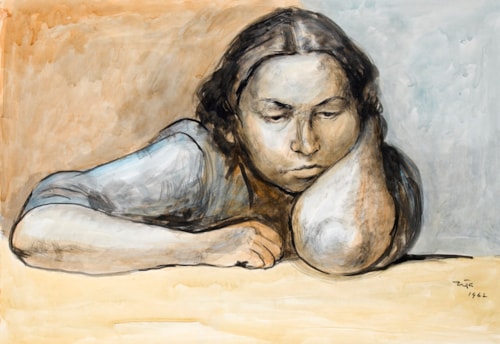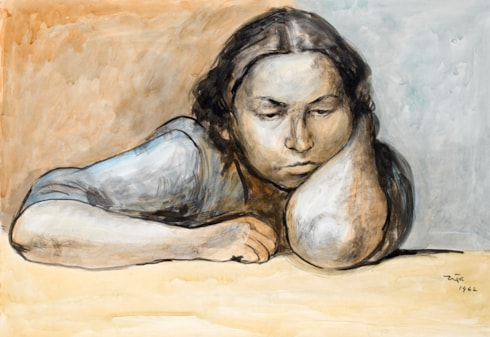
Francisco ZUÑIGA
Guadalupe 1912 - Mexico City 1998
Biography
A native of Costa Rica, Francisco Zúñiga studied sculpture and painting there, and his first works of sculpture date from around 1930. In 1936 he moved to Mexico to complete his training, and was to live and work there for the remainder of his career. As a sculptor, Zúñiga worked mainly in bronze but also in marble and alabaster. He received several commissions for monumental public sculptures but much of his work was in the form of sculptures for more intimate settings, though often still heavy and massive in form.
Zúñiga was devoted to the female form, whether nude or clothed, and male figures appear only rarely in his oeuvre. He was particularly inspired by the native women of southern Mexico, whose large bodies and peasant features recur frequently in his work, always imbued with a marked solemn dignity. As Ida Rodríguez Prampolini has written of Zúñiga, ‘He captured in his lines, volumes and composition the spirit of the Indian and mestizo of America...Through drawing or carving he concentrated, in volume and composition, the soul of a people whose essence he understood better than any other artist.’ Naturalized as a Mexican citizen in 1986, Zúñiga trained a large number of local sculptors. In 1990 he started to go blind, and began to concentrate on working in terracotta. He eventually gave up all artistic activity in 1993, five years before his death.
Zúñiga was a prolific draughtsman, and his drawings are usually related to sculptures. As the artist noted, ‘I think a lot through different drawings in order to make a sculpture, guided by volumetric forms.’ He also created drawings as studies for lithographs, a field in which he was particularly productive from the early 1970’s onwards. Printed in both monochrome and colour, his lithographs treated the same subjects as his sculptures.


